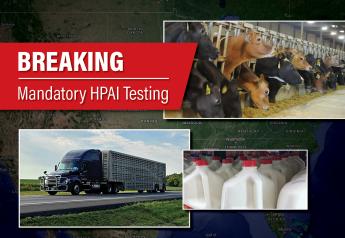Short Supplies Could Help Buoy Prices Even as Farmers Plan to Plant Record Number of Acres
USFR-RT2 3.13.21
U.S. farmers are expected to plant a record number of combined corn and soybean acres in 2021. Allendale, Inc’s nationwide acreage survey produced results in line with USDA’s initial acreage projection. The survey found farmers intend to plant 92.8 million acres of corn this year, and 90.31 million acres of soybeans. While the soybean estimate is 8% above last year’s levels, it’s on par with USDA's current estimate.
In just over two weeks, USDA will issue its Prospective Plantings, the first survey-based acreage report of the year by USDA, and Brian Basting of Advance Trading says those numbers will be key.
“It's critical because this is a survey-based number, and these markets are competing with each other. Oil seeds are leading the way right now, particularly oil seeds in relation to small grains in the northern plains,” says Basting. “A wildcard in the northern plains at this moment, though, is it’s quite dry, particularly up in North Dakota. So, we'll see how it shakes out. But in terms of market impact, no doubt those two reports [Planting Intentions and Quarterly Stocks} in the month with a big catch on the fact that we need acres planted this year.”
Even with a record number of acres projected to come out of the Prospective Plantings report, John Payne, publisher of This Week in Grain and Oilseeds, thinks the need for acres will help support prices.
“The value, in my opinion, is in those deferred contracts,” says Payne. “In my opinion, you've kind of topped out U.S. acreage unless you're going to rob from Peter to pay Paul.”
Payne says it’s not just an issue in the U.S. The intense competition is taking place in Canada, as well.
“The oil seed market - specifically soybean oil, canola oil, rapeseed oil over in Europe - there's tremendous amount of demand for that kind of market right now,” adds Payne. “And the short stick might be spring wheat. You'll get a 12-million-acre number we've seen the last few years that comes down 2 million, if you get a tough end of the season to the wheat growing regions, and all of a sudden that the carryover for high protein wheat shrinks a little bit. That story is not baked in the cake at this point, in my opinion.”
Payne thinks spring wheat and cotton may give up some acres for the 2021 season, but some of that may slide to sorghum.
“The acreage report is important, but there's not a whole lot of surprises,” says Payne. “We can't print more acreage, so if they're going to put 95 million acres on corn, it's got to come from somewhere else. If they're going to put 93 [million] to 94 [million] on beans, it's going to come from somewhere else. Unlike South America, where they can continue to just kind of bury supply with excess acreage. We don't have that issue here.”
Payne continues to believe the market is going to make or break based on weather, not the March Planting Intentions Report. Basting also thinks the Prospective Plantings report may not be the big report to watch on March 31.
“There's another report that day, and it's the Grain Stocks Report,” says Basting. “It will basically summarize the grain stocks on and off farm as of March 1, and it easily takes a backseat to the acreage report. However, that grain stocks report will be especially important for farm this year because the implied September, October, November feed residual use of corn by the USDA was record large in September, October and November. So, we'll see if that's followed up here.”
Related Stories:
High Prices Attracting High Acres
Markets Now: Did USDA Just Hint at Growing China ASF Concerns







